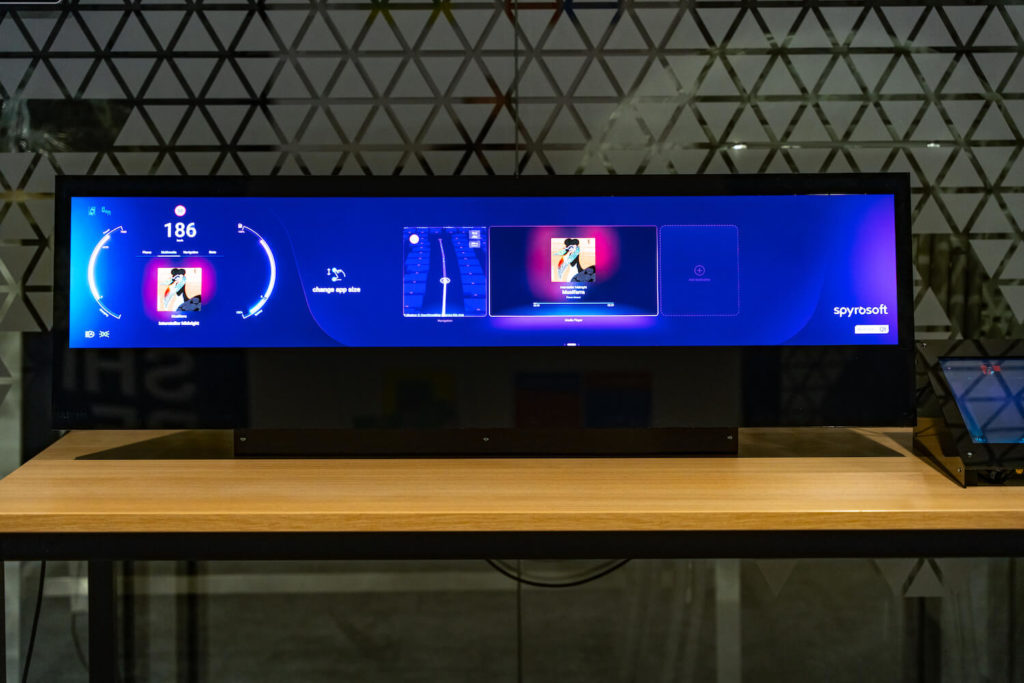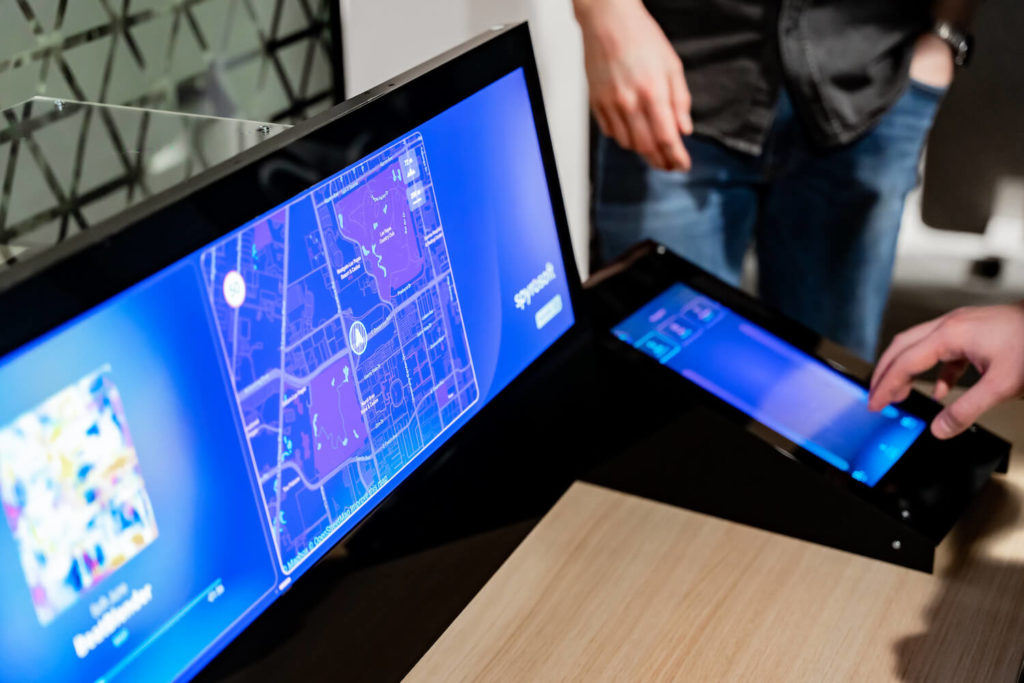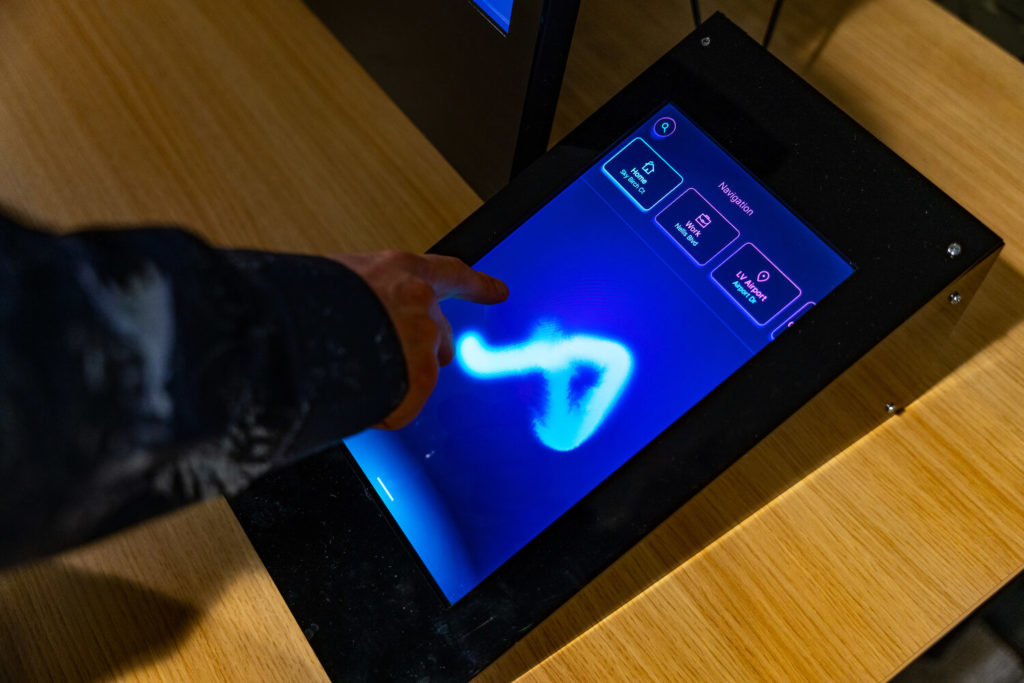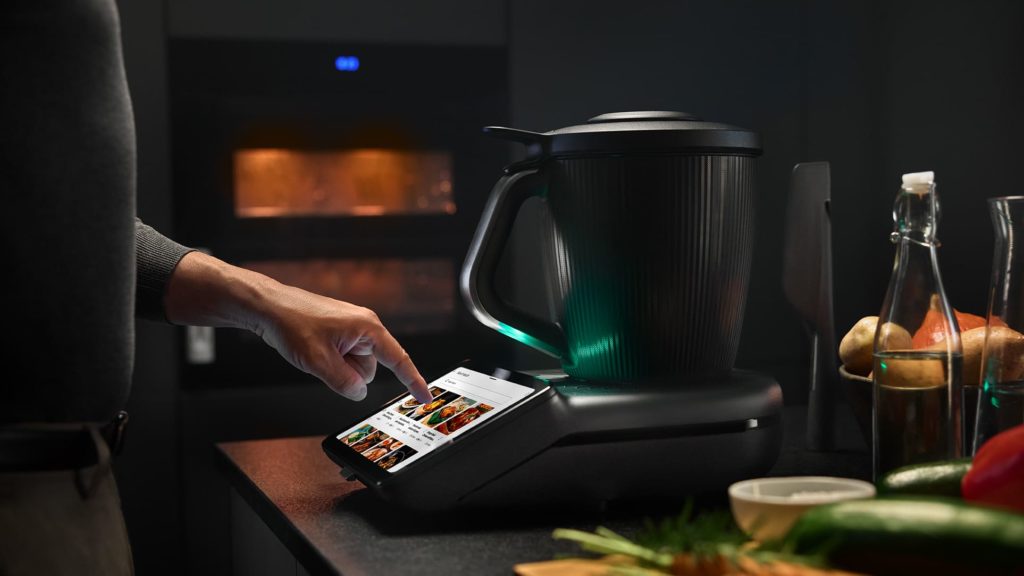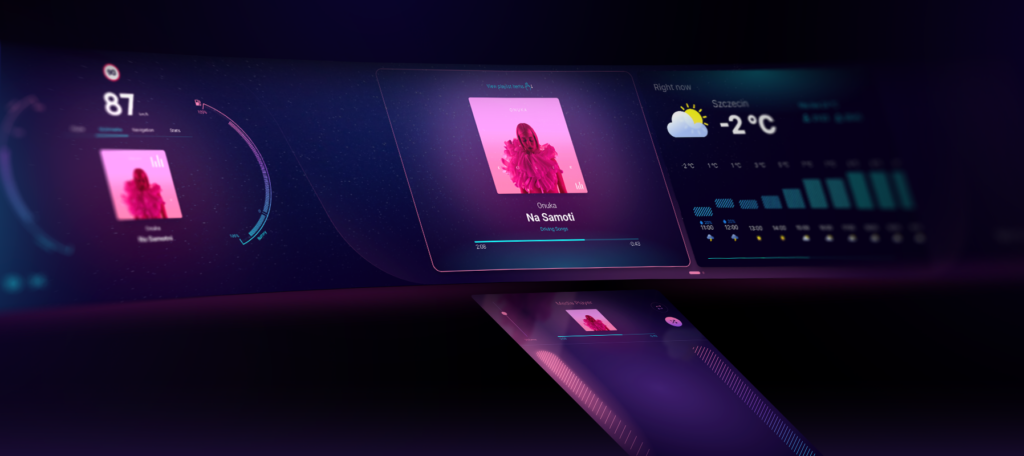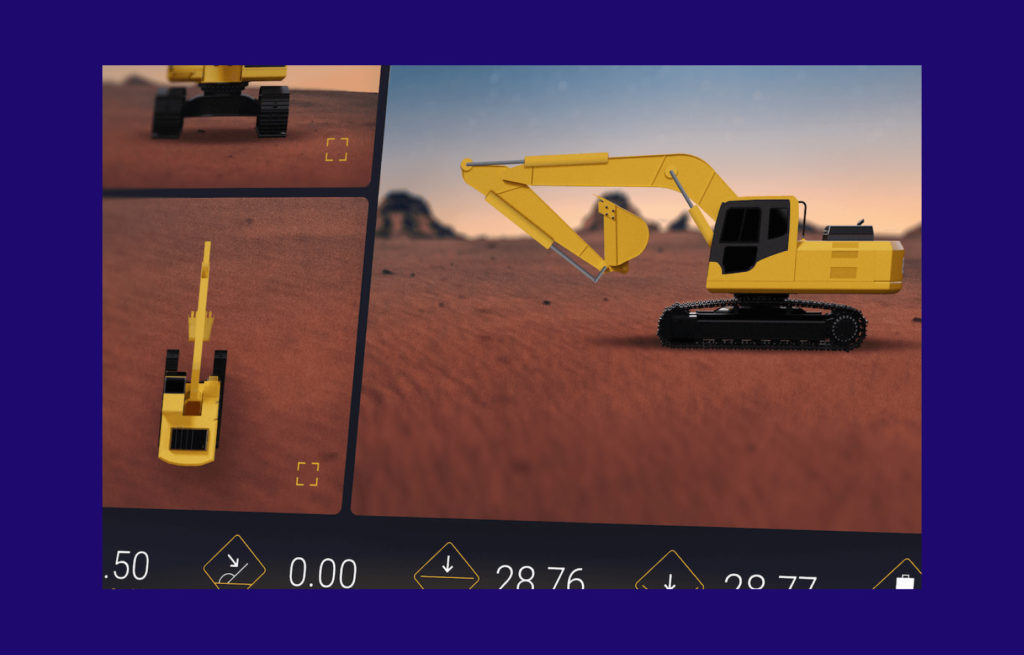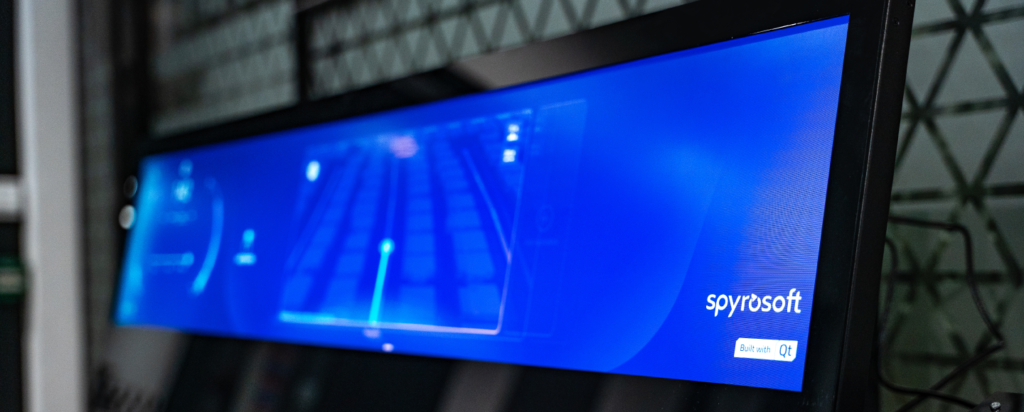HMI in automotive: human-machine interface services to accelerate the industry
With the increasing demands of car owners and safety requirements in the industry, the role of automotive HMI development solutions grows as well – the human-machine interface market size is projected to enlarge from USD 23 billion in 2023 to USD 49.43 billion by 2030 (source: Fortune Business Insights). Let’s take a look at the HMI services we provide to bring your automotive project to the next level.
HMIs in the automotive sector
Automotive Human Machine Interface (HMI) is a technology that enables humans to interact and communicate with vehicles. It includes various interface systems that allow users to control and access information within a car. Additionally, vehicle connectivity plays a crucial role in modern HMI systems, enabling seamless integration of various functionalities and enhancing the overall user experience. The main goal of HMI is to provide a smooth user experience, ensuring that drivers can safely and efficiently operate the features and functions of their vehicles.
The automotive human-machine interface technology includes devices such as in-vehicle infotainment systems, instrument clusters equipped with ADAS features, onboard diagnostics apps leveraging connected car technology, and AR displays that combine the real and virtual worlds.
Benefits of automotive HMIs for manufacturers and end-users
A well-designed human-machine interface in a vehicle can significantly reduce driver distraction, enabling safer interaction with vehicle functions, minimising the risk of accidents and providing personalisation options. HMIs benefit end-users and provide a competitive advantage to automotive manufacturers in a rapidly evolving market. As consumers prioritise advanced car safety, automakers can leverage innovative technologies to add more features to HMIs, further strengthening their position in the market.
Check our HMI consulting and development services
Learn moreWays to advance an automotive product with human-machine interface services
Users are demanding feature-loaded vehicles to give them more control. With the rise of automated driving technologies, ensuring a seamless transition between manual control and automated systems is crucial for safety and user experience. At the same time, with an increasing number of systems in a car, simplicity of use is key. Since functionality translates almost directly into safety in the automotive area, guaranteeing intuitive user experience and system reliability is fundamental.
As experts in both automotive and HMI, with solid technological knowledge and a UX/UI background, we can support you with your next project. Read what automotive HMI services we provide.
In-vehicle infotainment – all functions and multimedia at the driver’s fingertips
In-vehicle infotainment (IVI) is a multimedia system that’s embedded in a vehicle. It provides entertainment and information to the driver and passengers.
The system integrates audio and video playback, navigation, hands-free phone calls, and internet services via touchscreens, voice commands, or physical controls. It’s also connected to personal devices and vehicle data to enhance the user experience.
Wavey case study: a touch-controlled IVI system
As car display screens have become more extensive, navigating through such a large area can be troublesome. We embarked on the idea of controlling the system with gestures and began a car HMI initiative as a part of our R&D programme.
That’s how Wavey came to life. It is an IVI system operated not from the large screen but from an external tablet located between the seats at an angle of about 30 degrees. Keeping a strong focus on low-level and hardware, we aimed to use proven platforms and tools without compromising the visual identity, allowing car brands to customise and create a unique user interface.
The system is built in microHMI architecture. It leverages Android Automotive features and Qt components to provide excellent user experience.
Read the article Dojo initiative: Wavey, a gesture-controlled IVI system to learn more about the project.
Instrument clusters – immediate car status information
The instrument cluster is a panel located on the vehicle’s dashboard directly in front of the driver, providing them with crucial information at a glance. The device pictures real-time data such as vehicle speed and engine revs, navigation and speed limits, or warning messages. The instrument clusters we develop are fully customisable and visually appealing, giving the driver insights without unnecessary distraction.
We have expertise in both the HMI and automotive fields, we so we can provide you not only with the instrument cluster interface but also take care of integration between the HMI and vehicle’s systems and components, ensuring rapid data collection and processing.
Advanced Driver Assistance Systems for better safety
Advanced Driver Assistance Systems (ADAS) are technologies and features designed to improve vehicle safety and assistance when driving. ADAS is a sensor-based technology that integrates with cameras or radars, which provides the driver with real-time information about any obstacles or dangers on the road. Systems like adaptive cruise control, lane departure warnings, automatic emergency braking, and blind-spot detection are all part of ADAS, helping to prevent accidents and reduce the driver’s workload. The steering wheel, equipped with touch-sensitive controls and buttons, plays a critical role in enabling drivers to interact effortlessly with ADAS features
ADAS system has become not only a nice-to-have feature, but a response to safety regulations. European government authorities have stepped up their vehicle evaluation policies, requiring manufacturers to produce vehicles that meet government safety standards. Therefore, demand for Advanced Driver Assistance Systems is expected to increase the adoption of automotive HMI systems in the coming years. (source: Fortune Business Insights).
At Spyrosoft, we develop automotive HMIs with Advanced Driver Assistance Systems functionalities using 3D technology. The vehicle is shown on the interface and important information about the surroundings is displayed, e.g., the proximity to an object.
Augmented reality (AR) – directions and notifications without taking eyes from the road
In addition to touchscreens and voice commands, head-up displays are becoming an integral part of in-vehicle infotainment systems, providing real-time navigation and route optimisation.
Augmented Reality (AR) heads-up displays are becoming increasingly important in automotive HMI systems. Important information, such as navigation instructions, directions, speed limits, and collision warnings is projected on to a windshield, which is within the driver’s field of vision. This increases the driver’s awareness of their surroundings. These displays also show app notifications and incoming calls, making it easier for drivers to stay focused on the road.
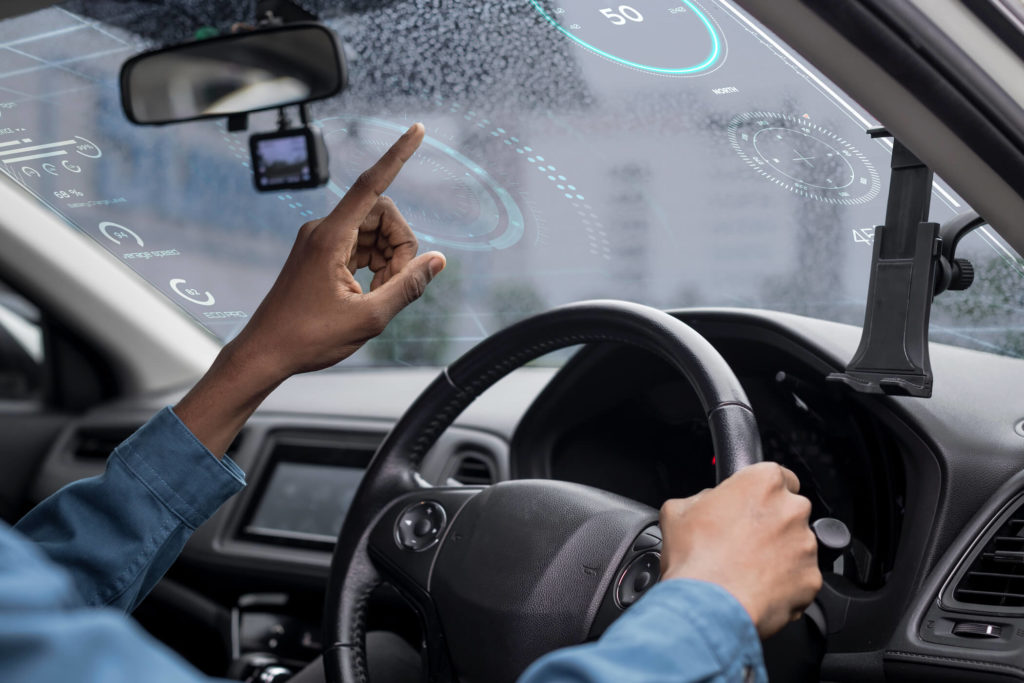
HMI ecosystem for the next-gen in-vehicle infotainment
We support one of our clients – an OEM from the premium class segment – in building an innovative car infotainment system consisting of a driver, central and co-driver touchscreens, as well as a head-up display, all integrated with the ADAS system. Our work includes design, programming, testing, and implementation using technologies such as Unity, Qt, Squish, or AltTester.
Data availability services for connected cars
Connected cars are vehicles equipped with an internet connection with data stored and processed in public cloud services. This connectivity enables telemetrics solutions and provides features like real-time traffic updates, emergency assistance, or in-car entertainment, enhancing the driving experience and vehicle functionality. The information can be shared with devices inside the vehicle and with external applications, enabling the user to carry out remote diagnostics or driving analysis, such as fuel consumption.
Companion apps for better vehicle understanding
We develop applications for car owners to gain instant insights and maintain control over the vehicle’s performance. Apps such as Onboard Diagnostics (OBD-II) allow owners to identify issues efficiently using a mobile application without deciphering an icon on the car dashboard and searching for its equivalent in a car manual.
The applications also provide maintenance reminders and scheduling, ensuring vehicles stay in optimal condition. The app can get data from the car’s computer system via the internet using the connected cars solution or directly via Bluetooth.
Drive into the future with HMI experts
To take full advantage of automotive HMI solutions, you should entrust your project to a team of specialists. We know how to combine our expertise in both the automotive and the human-machine interface domains for the best possible outcomes.
As a company that provides end-to-end services, we take care of design, development, tests, implementation, and maintenance. We always carry out our work in line with legal and safety industry requirements. We comply with standards such as ISO 26262, TISAX, or ASPICE. With over 150 HMI developers, 300 embedded software engineers, and 150 QA specialists. We select teams to meet all the technical requirements of a project.
Read more about our HMI development services, or contact us via the form below to discuss your automotive project.
About the author
CONTACT US

